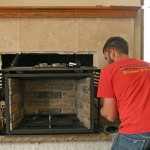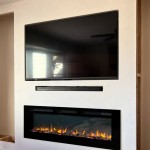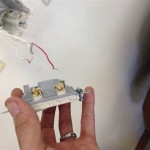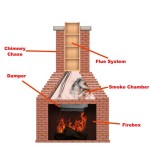```html
Victorian Fireplace Gas Conversion: A Comprehensive Guide
Victorian fireplaces, admired for their ornate designs and historical significance, are a prominent feature in many period homes. While traditionally designed for solid fuel such as coal or wood, modern homeowners often seek the convenience and efficiency of gas. This desire has led to the increasing popularity of Victorian fireplace gas conversion. Understanding the process, considerations, and regulations involved is crucial for a successful and safe conversion.
Converting a Victorian fireplace to gas involves several key steps, from initial assessment and proper planning to meticulous installation and testing. The decision to convert often stems from a desire for reduced maintenance, consistent heat output, and ease of use compared to traditional solid fuel options. Gas alternatives eliminate the need for storing and handling fuel, as well as the laborious task of cleaning up ashes. However, retaining the authentic aesthetics of the fireplace while ensuring safe and efficient operation presents unique challenges.
Assessing Suitability and Planning the Conversion
The first step in a Victorian fireplace gas conversion is a comprehensive assessment of the existing fireplace and chimney. This assessment determines the fireplace's structural integrity and its suitability for gas conversion. Cracks, crumbling brickwork, or other signs of damage can compromise the safety and efficiency of the conversion. A professional chimney sweep should inspect and clean the chimney flue to ensure it is free of obstructions and in good working order. A blocked or damaged flue can lead to dangerous carbon monoxide buildup.
A crucial aspect of the assessment is determining the flue size and its compatibility with the proposed gas appliance. Gas appliances require specific flue sizes to vent exhaust gases safely and effectively. An incorrectly sized flue can lead to incomplete combustion and the release of harmful byproducts into the home. Manufacturers' specifications for the chosen gas appliance must be consulted to ensure proper flue compatibility.
Planning also involves selecting the appropriate gas appliance for the fireplace. Several options are available, including gas logs, gas inserts, and freestanding gas stoves designed to fit within the existing fireplace opening. Gas logs provide a realistic flame appearance and are a popular choice for homeowners seeking to maintain the aesthetic appeal of a traditional fireplace. Gas inserts offer higher heating efficiency and can be thermostatically controlled for consistent room temperature. The selection process should consider the desired heat output, aesthetic preferences, and budgetary constraints.
Local building codes and regulations governing gas appliance installations must be thoroughly researched and adhered to during the planning phase. Permits are typically required for gas conversions, and inspections are conducted to ensure compliance with safety standards. Engaging a qualified and licensed gas fitter who is familiar with local regulations is essential for a smooth and compliant conversion process.
The Installation Process: A Detailed Overview
The installation process begins with preparing the fireplace opening and the hearth. This may involve removing existing grates, firebacks, or other components from the fireplace. The hearth must be level and capable of supporting the weight of the gas appliance. If necessary, the hearth may need to be reinforced or replaced to meet safety requirements.
The next step is connecting the gas supply to the fireplace. A gas line must be run from the main gas meter to the fireplace location. This requires careful planning to ensure the gas line is properly sized and installed according to code. Plumbers typically use black iron pipe, which must be threaded and sealed to prevent leaks. A shut-off valve should be installed near the fireplace to allow for easy isolation of the gas supply in case of maintenance or emergency.
With the gas supply in place, the gas appliance can be installed within the fireplace opening. The appliance must be securely positioned and leveled to ensure proper operation and venting. The flue connection is then established, connecting the appliance's exhaust outlet to the chimney flue. This connection must be airtight to prevent the escape of exhaust gases into the home.
After the appliance is installed and the flue connection is complete, the gas line can be connected to the appliance. All gas connections must be thoroughly tested for leaks using a gas leak detector. Any leaks must be immediately repaired to ensure safety. The appliance should then be started and tested to verify proper ignition, flame stability, and heat output.
Depending on the type of gas appliance installed, additional steps may be required to complete the installation. For gas logs, the logs must be carefully arranged to create a realistic flame appearance. For gas inserts, the surrounding trim and firebox may need to be adjusted to ensure a proper fit and seal.
Safety Considerations and Ongoing Maintenance
Safety is paramount in any gas fireplace conversion. Carbon monoxide detection is crucial. A carbon monoxide detector must be installed near the fireplace to warn occupants of any potential carbon monoxide leaks. Carbon monoxide is a colorless, odorless gas that can be fatal if inhaled in high concentrations. Regular testing of the carbon monoxide detector is essential to ensure it is functioning properly.
Proper ventilation is another critical safety consideration. The chimney flue must be free of obstructions and properly sized to vent exhaust gases safely and effectively. Regular chimney inspections and cleaning are recommended to prevent creosote buildup and ensure proper flue function. Creosote is a flammable substance that can accumulate in the chimney flue over time, posing a fire hazard.
Ongoing maintenance is essential for the safe and efficient operation of a gas fireplace. The gas appliance should be serviced annually by a qualified technician. This service should include inspecting the burner, pilot light, and gas connections for any signs of wear or damage. The technician should also clean the appliance and ensure it is operating according to manufacturer's specifications.
Homeowners should also visually inspect the fireplace regularly for any signs of damage or malfunction. This includes checking for gas leaks, unusual noises, or irregular flame patterns. If any problems are detected, the gas supply should be shut off immediately, and a qualified technician should be contacted for repairs. Never attempt to repair a gas appliance without proper training and expertise.
Furthermore, maintaining the aesthetic appeal of the Victorian fireplace is crucial. Regular cleaning of the fireplace surround and mantelpiece is recommended to prevent dust and grime buildup. Period-appropriate accessories, such as fire screens and andirons, can enhance the fireplace's historical character. Care should be taken to select accessories that are compatible with gas appliances and do not obstruct the flame or ventilation.
By carefully assessing the fireplace, planning the conversion meticulously, adhering to safety regulations, and conducting regular maintenance, homeowners can enjoy the convenience and efficiency of a gas fireplace while preserving the beauty and historical significance of their Victorian homes. Properly executed Victorian fireplace gas conversion blends modern functionality with timeless elegance.
```
Gas Fires For Victorian Fireplaces Fireplace Wood Burning Inserts Design

Victorian Fireplace Gas After Living Room Minneapolis By Woodland Stoves And Fireplaces Houzz Ie

Federation 300 Gas Burner Jetmaster Fireplaces

13 Tv Room Victorian Fireplace Ideas Gas Insert

Windsor Small Victorian Style Gas Fireplace

Period And Victorian Fireplace Inserts Bonfire Fireplaces

Victorian Gas Fire Insert Houzz

Gas Inserts Victorian Fireplace

Converting A Fireplace To Wood Burning Stove Chesneys

Gas And Electric Fire Options Stovax Gazco
Related Posts








